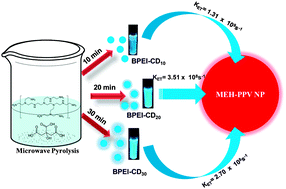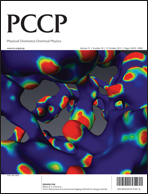Steady state and time resolved spectroscopic study of C-dots–MEH–PPV polymernanoparticles composites†
Abstract
Fluorescent carbon dots (C-dots) have been found to be a new class of nanomaterial for potential applications. Herein, polyethylenimine branched (BPEI) functionalized carbon dots (C-dots) are synthesized by changing the synthesis time using a microwave pyrolysis method. The photoluminescence intensity and average decay time of C-dots are found to be increased with increasing the crystallinity of the C-dots. C-dots–MEH–PPV


 Please wait while we load your content...
Please wait while we load your content...